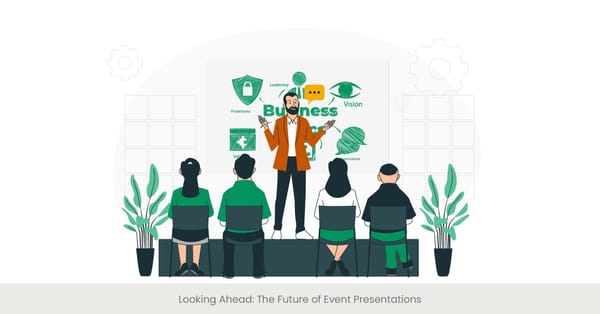
The Role of Content Marketing in Event Promotion
Engaging Audiences Through Strategic Content Creation
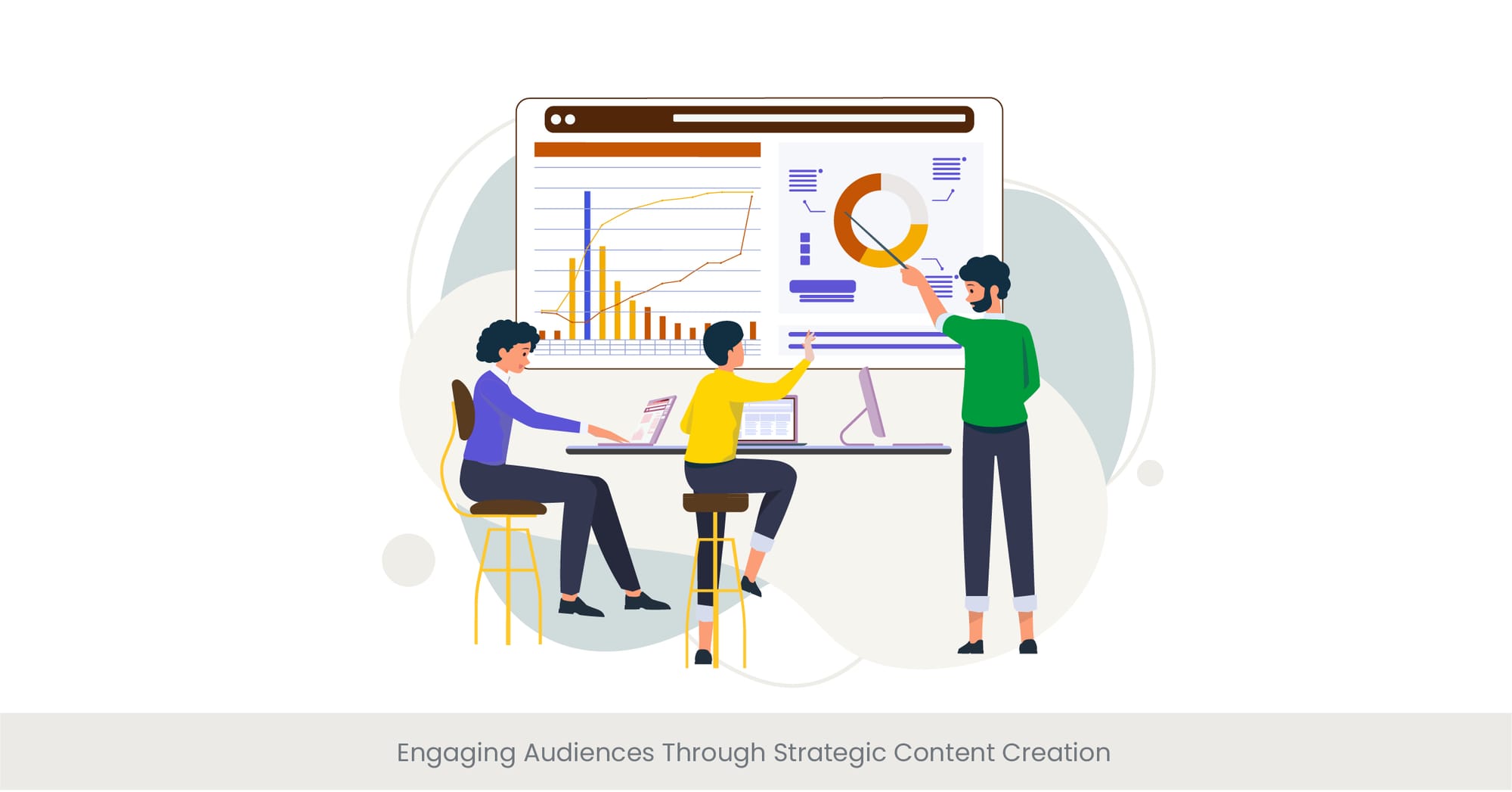
In today's digital age, content marketing has emerged as a pivotal strategy in promoting events and ensuring their success. By crafting and disseminating valuable, relevant, and consistent content, organizers can significantly enhance visibility, engage potential attendees, promote and create a buzz around and promote their events. This approach not only informs but also entertains and inspires the target audience, fostering a deeper connection with the event's brand.
The Evolution of Content Marketing in Event Promotion
Historically, event promotion relied heavily on traditional advertising methods such as print ads, billboards, and direct mail. However, the advent of digital media has transformed the landscape, introducing content marketing as a dynamic and interactive way to reach audiences. Through blog posts, social media content, email newsletters, and more, content marketing offers a multifaceted platform for event promoters to convey their message, share valuable insights, and to build excitement and anticipation among potential attendees.
Real-World Successes: Case Studies and Trends
One illustrative example of effective content marketing in event promotion is the use of teaser videos on social media platforms, which have proven to be exceptionally powerful in building anticipation and excitement for upcoming events. Additionally, live Q&A sessions, behind-the-scenes glimpses, and user-generated content campaigns have become popular strategies for engaging audiences and generating buzz. These techniques not only highlight the event's unique aspects but also foster a sense of community and belonging among prospective attendees.
Validating Strategies with Data and Expert Insights
Research underscores the efficacy of content marketing in event promotion, with statistics showing a marked increase in attendee engagement and ticket sales as a result of strategic content initiatives. According to a study by Content Marketing Institute, events that leverage targeted content strategies enjoy higher visibility and engagement rates. Furthermore, expert insights from leading content and visual design agencies emphasize the importance of a cohesive content strategy that aligns with the event's goals and audience preferences, ensuring a lasting impact and successful business outcomes.
Designing Visually Appealing Event Branding Materials
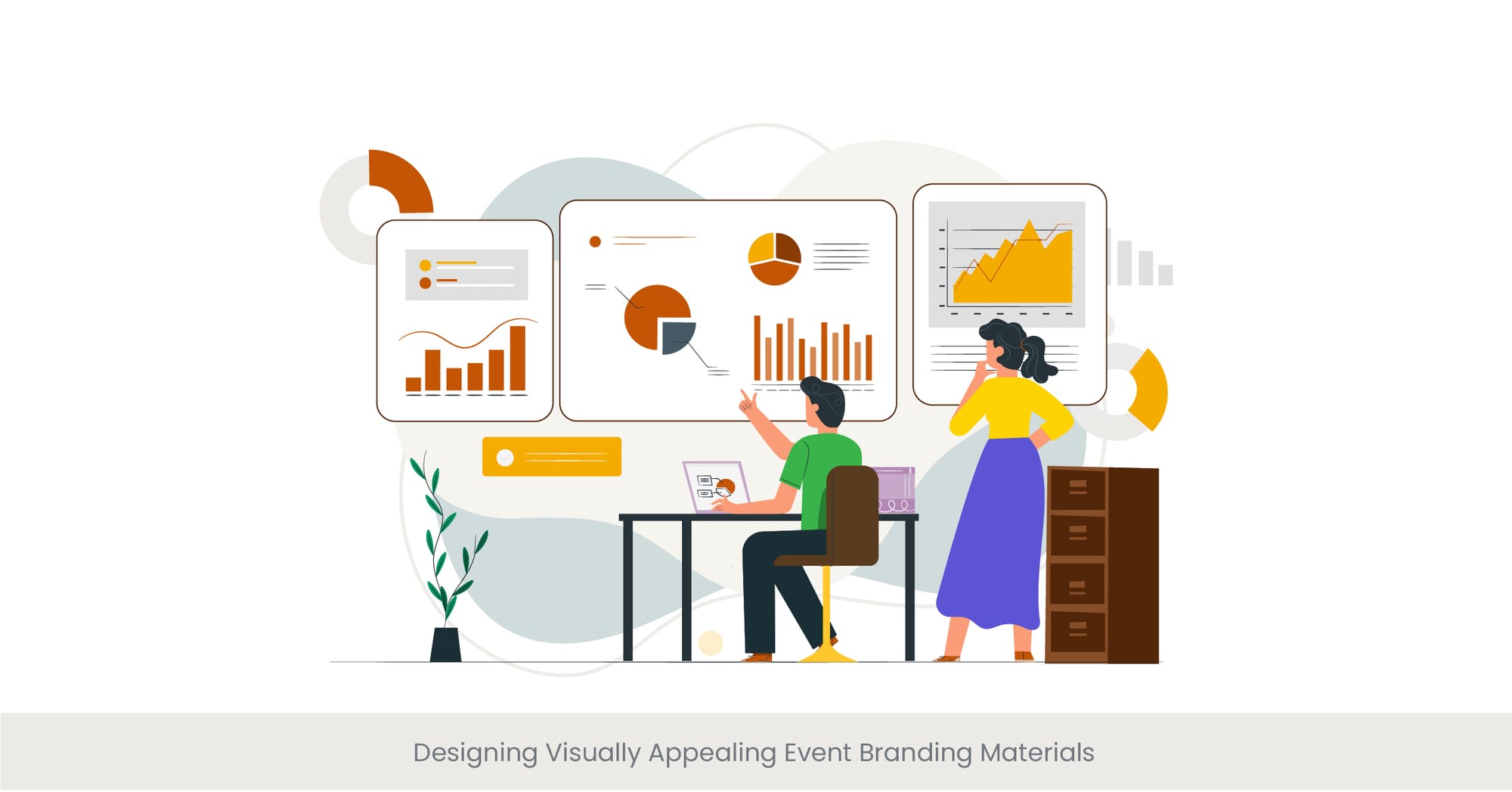
Crafting the First Impression with Visual Identity
Event branding materials are not just promotional tools; they are the visual voice of your event, conveying its essence, values, and the experience attendees can expect. In the realm of event marketing, the design of these materials—from logos and posters to digital assets—plays a crucial role in attracting your audience's attention and establishing a memorable brand identity. A well-crafted visual identity not only distinguishes your event in today's crowded marketplace but also creates a lasting impression that resonates with your target audience.
The Backbone of Event Branding: History and Significance
Delving into the history of event branding reveals its evolution from simple logos original designs and color schemes to complex visual storytelling tools that leverage graphic design, typography, print design and color psychology to evoke emotions and communicate messages. This transformation underscores the significance of design in creating a cohesive and impactful brand experience. By understanding the elements that contribute to successful event branding, organizers can develop materials that truly represent the essence of their event and appeal to their desired audience.
Showcasing Excellence: Case Studies and Innovative Approaches
Leading content and visual design agencies have pushed the boundaries of event branding, demonstrating that innovative design can significantly enhance audience engagement and event success. For instance, interactive event websites and immersive experiences crafted by skilled graphic designers not only serve informational purposes but also engage users on a deeper level, encouraging exploration and interaction. Additionally, various social media marketing campaigns featuring captivating graphic content production for events have proven effective in generating buzz and building excitement.
Leveraging Expertise: Insights from Industry Leaders
Research and insights from top design services highlight the impact of visually appealing branding materials on event promotion. A study by a renowned content and visual design agency revealed that events with strong visual identities are more likely to attract attention and achieve higher attendance rates. Moreover, experts emphasize the importance of consistency across all branding materials, ensuring that each element—from event videos to promotional posters—aligns with the overall brand narrative and enhances the event's visual appeal.
Strategies for Effective Graphic Content Production for Events
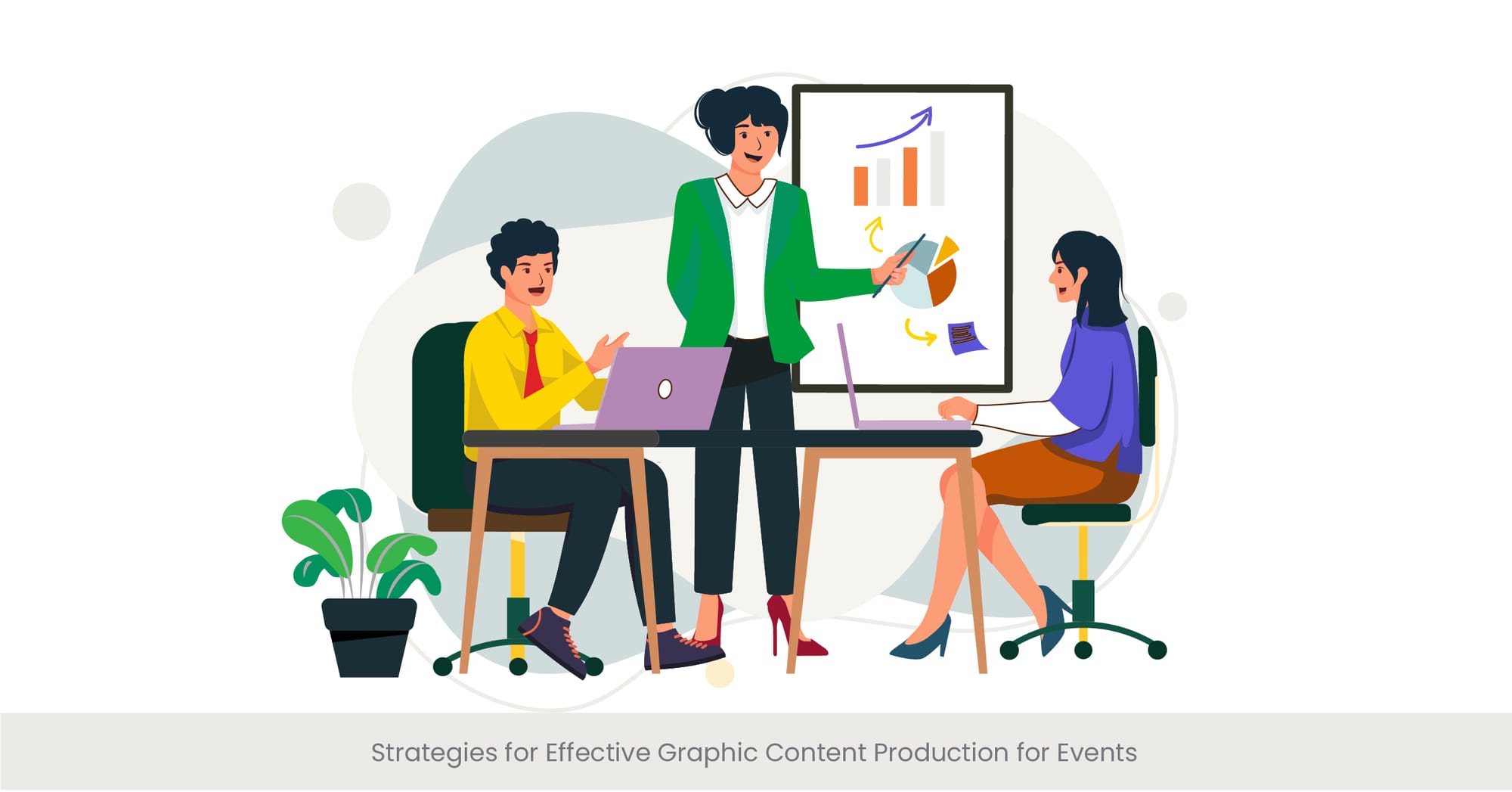
Maximizing Impact with High-Quality Graphic Content
In the competitive landscape of event promotion, the production of high-quality graphic content stands as a cornerstone for capturing audience attention and conveying the event's message. Effective graphic content production involves more than just aesthetic appeal; it requires a strategic approach to design that resonates with the target audience, communicates the essence of the event, and differentiates it from the competition. This design process begins with a clear understanding of the event's goals, the audience's preferences, and the key messages that need to be highlighted.
The Evolution of Graphic Design in Events
Graphic design for events has evolved from basic informational brochures to sophisticated digital experiences that capture and engage users across multiple platforms. This evolution reflects the growing importance of visual elements in creating immersive experiences for attendees. By analyzing historical trends and technological advancements, event organizers can leverage graphic design services to produce content that not only informs but also entertains and inspires the audience, whether through social media graphics, event websites, or promotional music videos.
Illustrating Success through Case Studies
Notable examples of successful graphic content production for events include interactive event websites designed by graphic designers that offer virtual tours of event spaces, engaging event videos that highlight key moments, speakers or entertainment, and social media campaigns that utilize visually striking graphics to generate buzz. These examples showcase how creative graphic design services can be utilized to build anticipation, engage potential attendees, and create a buzz around the event long before it begins.
Get expert tips to create compelling virtual event presentations.
Read Our Guide
Empowered by Data: Insights and Analytics
Evidence of the effectiveness of strategic graphic content production comes from both industry studies and real-world feedback. For instance, events that employ a consistent visual theme across all promotional materials tend to see a higher engagement rate on social media platforms. Furthermore, data from content and visual design agencies indicate that events with compelling graphic design elements—such as event branding video content and promotional videos—experience significantly higher conversion rates, from interest to actual attendance.
Utilizing Video Content to Build Anticipation
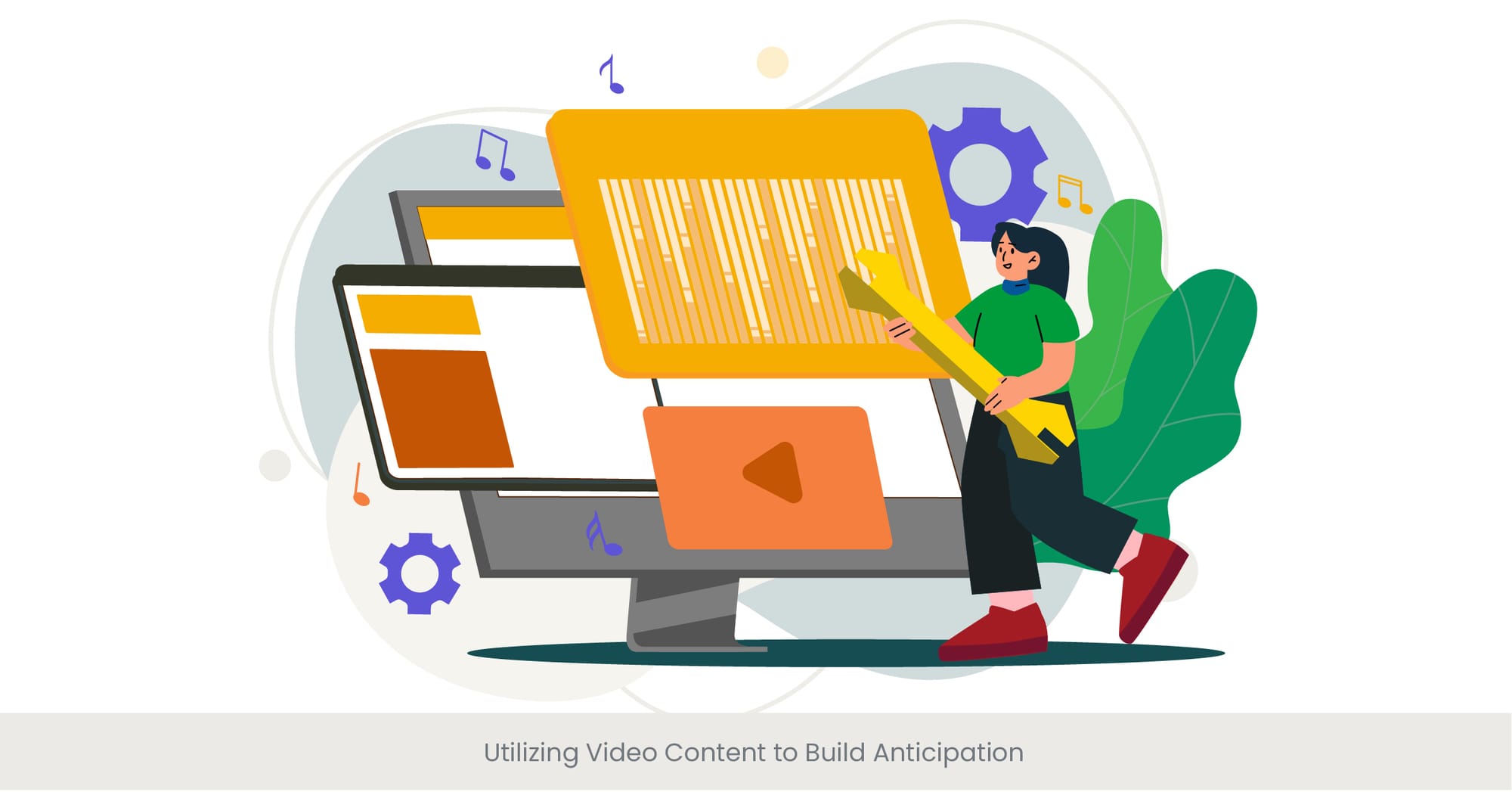
The Power of Video in Event Promotion
Video content has emerged as an indispensable marketing tool, in the arsenal of event promotion, offering a dynamic and engaging way to build anticipation and connect with potential attendees. Unlike static images or text, video has the unique ability to convey emotions, narratives, and detailed information in an immersive format, making it ideal for showcasing the highlights, ethos, and unique selling points of an event. Leveraging event videos effectively can transform passive viewers into enthusiastic participants, eager to experience what the event has to offer firsthand.
Evolution and Impact of Video Content
The rise of digital media has catapulted video content to the forefront of event marketing strategies. From early promotional films to today's engaging social media clips and immersive 360-degree experiences, the evolution of video content reflects a growing understanding of its power to captivate and persuade. By tapping into this evolution, event organizers can utilize video to not only present their event in the best light but also to weave a compelling narrative that resonates with their target audience, thereby significantly enhancing event anticipation.
Roadshow presentation design demands a flexible, yet cohesive format that can be adapted to different locations and audiences. Whether pitching to investors or showcasing a product, consistency in design and messaging ensures that your brand is clearly communicated across all stops of the roadshow.
Explore our latest insights on presentation design trends.
Read Our Blog
Real-World Examples: Video Content Success Stories
Examples of video content's impact on event promotion abound, from viral event teasers that generate widespread buzz to in-depth interviews with speakers that provide valuable insights into the event's content. For instance, many successful events incorporate behind-the-scenes footage, testimonials from past attendees, and sneak peeks of the event's offerings to create a sense of excitement and exclusivity. These strategies, executed through high-quality event branding video content, have proven effective in not only attracting attention but also in building a loyal community around the event.
Supporting Evidence: The Effectiveness of Video Content
The effectiveness of video content in building anticipation for events is supported by a wealth of data. Studies have shown that video content can significantly increase engagement rates, with promotional videos often leading to higher conversion rates and increased ticket sales. Insights from content and visual design agencies further validate this, highlighting that video content is not only preferred by audiences but also leads to a deeper emotional connection with the event, ultimately driving attendance and participation.
Crafting Immersive Experiential Marketing Campaigns
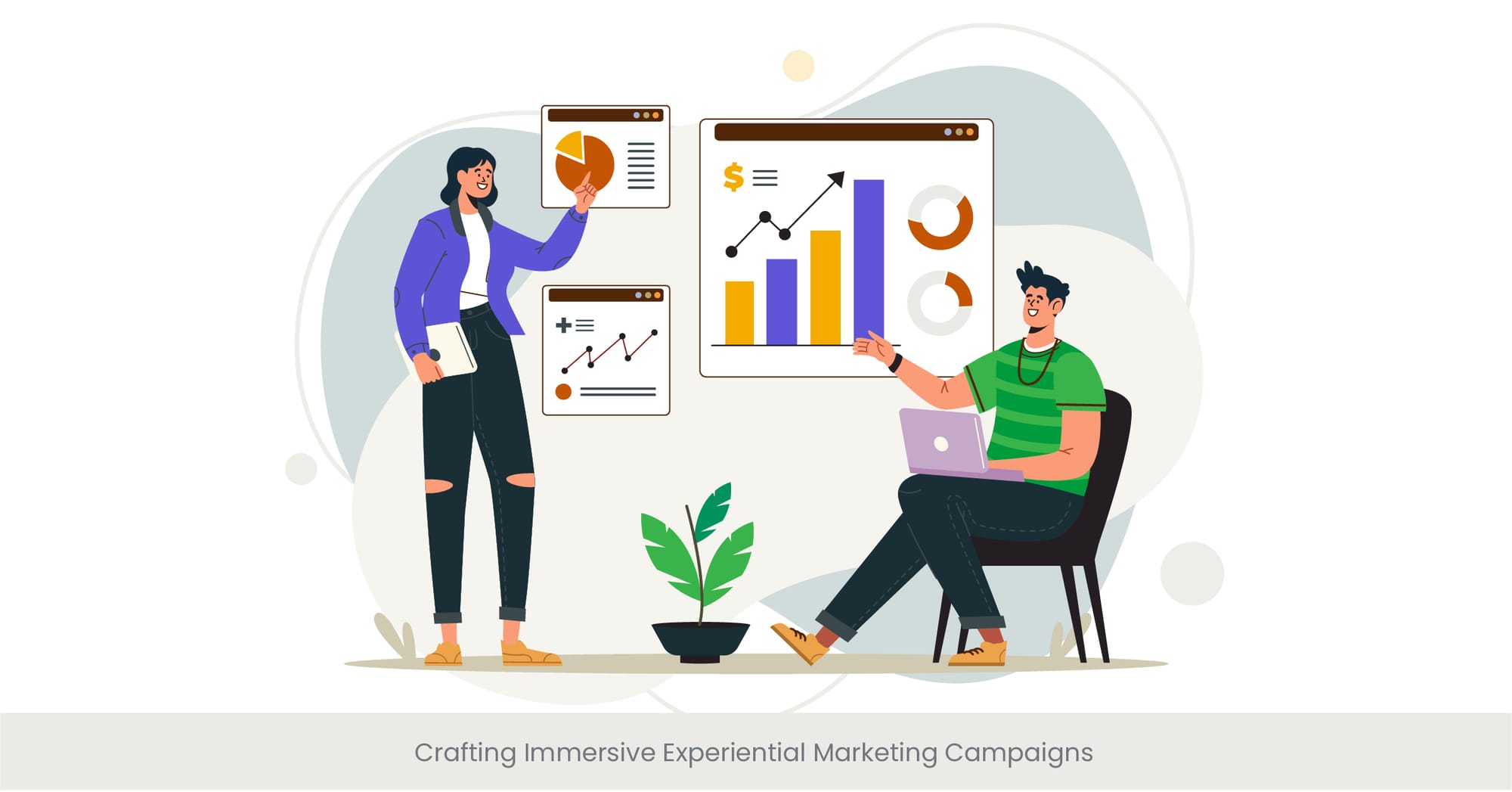
Creating Unforgettable Connections through Experiences
Experiential marketing campaigns stand out as a powerful strategy to engage audiences by immersing them in a brand's world through interactive and memorable experiences. These campaigns go beyond traditional advertising by fostering direct connections between the brand and its audience, turning passive observers into active participants. In the context of live event and promotion, crafting immersive experiential marketing campaigns involves designing encounters that encapsulate the essence of the event, encouraging participants to engage with the content on a deeper level, and building anticipation for the actual event.
The Evolution of Experiential Marketing
From its inception, experiential marketing has evolved from simple product demonstrations to complex, immersive experiences that leverage the latest in digital and physical design technologies. This evolution reflects a broader shift in consumer behavior, with audiences increasingly seeking meaningful interactions and authentic connections with brands. By integrating experiential marketing campaigns into event promotion strategies, organizers can create a buzz, generate interest, and provide a taste of the event's atmosphere, thereby enhancing engagement and boosting attendance.
Illustrative Examples of Success
Notable examples of immersive experiential marketing campaigns include virtual reality (VR) previews of event spaces, augmented reality (AR) apps that bring event posters to life, and interactive online platforms that allow users to explore event content in engaging ways. These innovative approaches not only generate excitement for the upcoming event but also establish a memorable brand experience that attendees are likely to share with their networks, further amplifying the event's reach and impact.
Data-Driven Insights on Experiential Marketing's Impact
The effectiveness of immersive experiential marketing campaigns is underscored by compelling data. Studies have shown that events incorporating experiential elements see significantly higher levels of attendee engagement, word-of-mouth promotion, and overall satisfaction. Feedback from participants often highlights the value of interactive and immersive experiences in creating a lasting impression and a deeper connection with the event's brand. Furthermore, content and visual design agencies specializing in experiential marketing underscore the importance of aligning these campaigns with the event's goals and audience preferences to maximize impact and ensure success.
Aligning Your Content Strategy with Event Goals
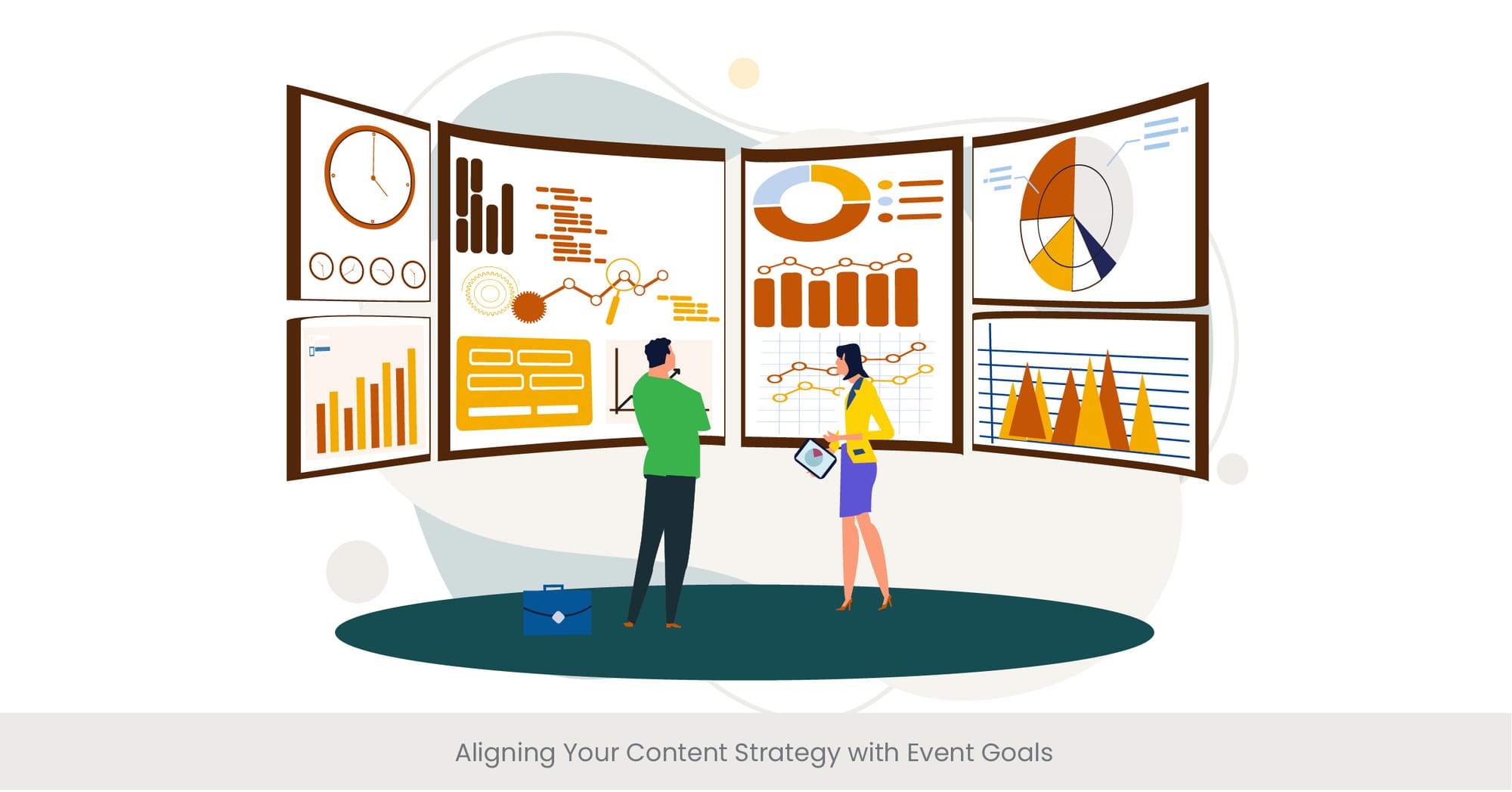
Harmonizing Content with Event Objectives
The key to a successful event lies not just in meticulous planning and execution but in how effectively the content strategy aligns with the event's overarching goals. This alignment process ensures that every piece of content, from social media posts to promotional videos, contributes towards achieving specific outcomes, whether they're related to attendee numbers, engagement levels, or brand awareness. A well-crafted content strategy acts as a roadmap, guiding the creation and distribution of content that resonates with the target audience and amplifies the event's core messages.
Virtual event presentation design plays a crucial role in engaging remote audiences. Creating dynamic slides with visuals and interactive elements can maintain attention throughout the event. A well-designed presentation can effectively communicate key messages, ensuring that virtual attendees remain engaged, fostering meaningful interactions, and driving successful event outcomes.
Understanding the Symbiosis between Content and Goals
The relationship between content strategy and event goals is symbiotic, with each element informing and enhancing the other. A deep dive into this interconnection reveals the importance of setting clear, measurable objectives at the outset and crafting a content plan that supports these aims. This approach not only ensures coherence and relevance across all communications but also enables organizers to leverage content most effectively to engage potential attendees, generate buzz, and build anticipation for the event.
Case Studies: Strategy in Action
Real-world examples highlight the effectiveness of aligning content strategy with event goals. Events that have achieved significant success often feature a strategic use of diverse content types, tailored to different stages of the attendee journey. For instance, early-stage content might focus on awareness and information, while content closer to the event date might aim to excite and convert. Analyzing these case studies, event organizers can glean insights into best practices for content creation and distribution that directly contribute to achieving event objectives.
Leveraging Insights for Impact
The strategic alignment of content and event goals is supported by data indicating higher levels of success for events that adopt this integrated approach. Insights from content and visual design services show that when content is purposefully designed to meet specific event objectives, there is a noticeable increase in engagement, conversion rates, and overall event performance. These findings underscore the importance of a strategic, goal-oriented content plan in maximizing the impact of event marketing efforts.
The Impact of Storytelling on Audience Engagement
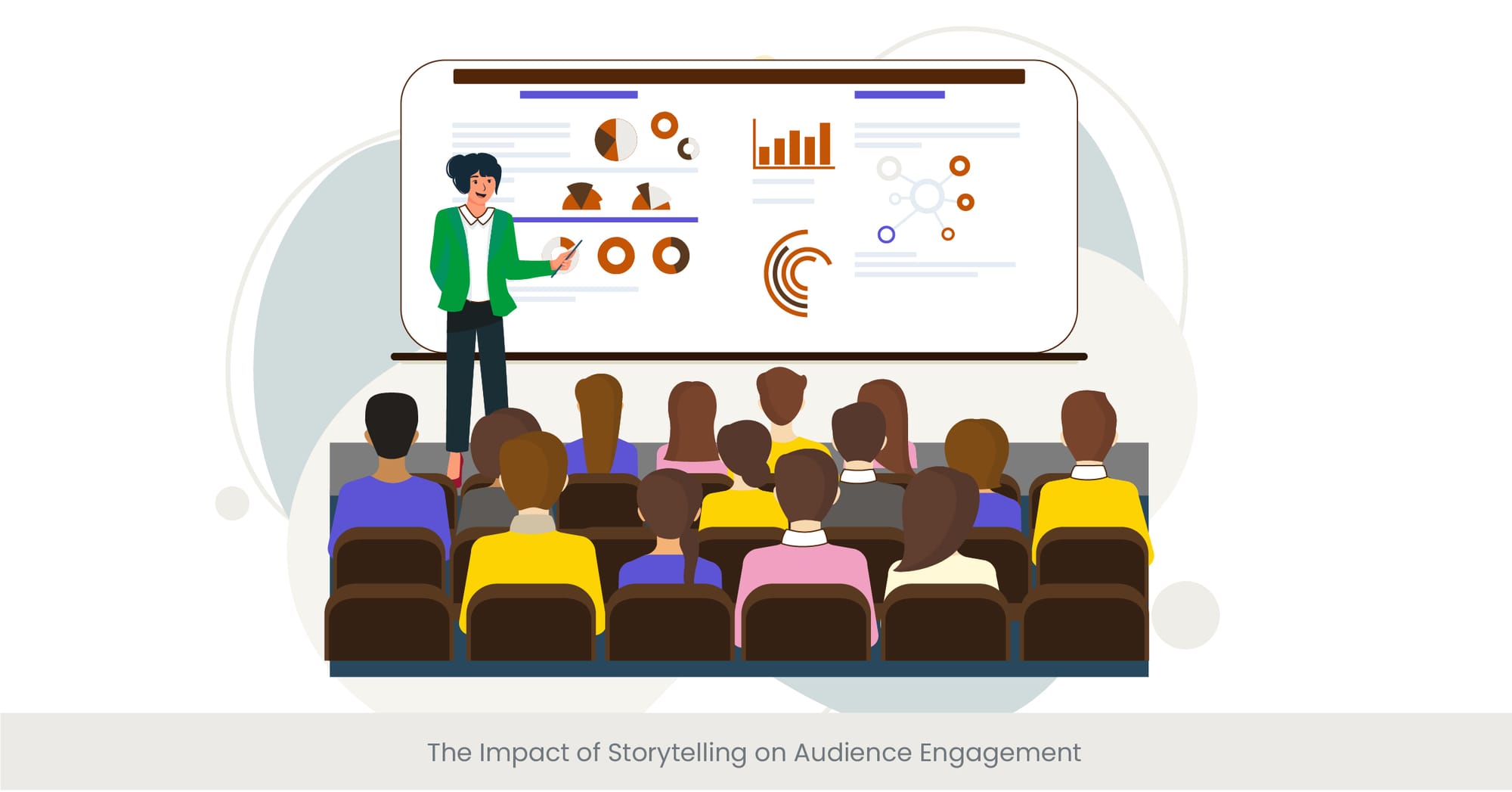
Enthralling Audiences with Compelling Narratives
The art of storytelling transcends mere entertainment, serving as a powerful tool to deepen audience engagement and forge meaningful connections. In the context of event promotion, leveraging storytelling can transform how potential attendees perceive and interact with your event. Through captivating narratives that resonate on a personal level, organizers can evoke emotions, convey values, and articulate the unique aspects of their event, of course, thereby fostering a sense of anticipation build trust and belonging among the audience.
The Evolution of Storytelling in Event Promotion
Over time, storytelling in event promotion has evolved from straightforward narratives to complex, multi-layered stories that leverage various media and platforms. This evolution reflects a broader trend towards more authentic and immersive marketing strategies. By embedding stories within their content strategies, event organizers can create a cohesive narrative that spans across promotional videos, social media campaigns, and experiential marketing efforts, effectively begin drawing the audience into the event's world even before it begins.
Real-World Examples: Storytelling in Action
Successful applications of storytelling in event promotion often feature a mix of personal anecdotes, behind-the-scenes glimpses, and participant testimonials to create a rich, relatable narrative. For example, events that highlight the journey of speakers or performers through video content and social media posts not only humanize these figures but also build a narrative anticipation for their appearances. Similarly, using storytelling to highlight the impact of the event on individuals or communities can significantly enhance audience engagement and loyalty.
Data-Driven Insights on the Effectiveness of Storytelling
The impact of storytelling on audience engagement is not just anecdotal; it's backed by data. Research indicates that events utilizing storytelling in their promotion strategies see higher levels of attendee interaction, social media sharing, and overall satisfaction. Content and visual design agencies have noted that storytelling not only boosts the appeal of the event but also aids in retaining audience attention over time, leading to more meaningful engagements and a stronger event brand.
Content Personalization for Event Audiences
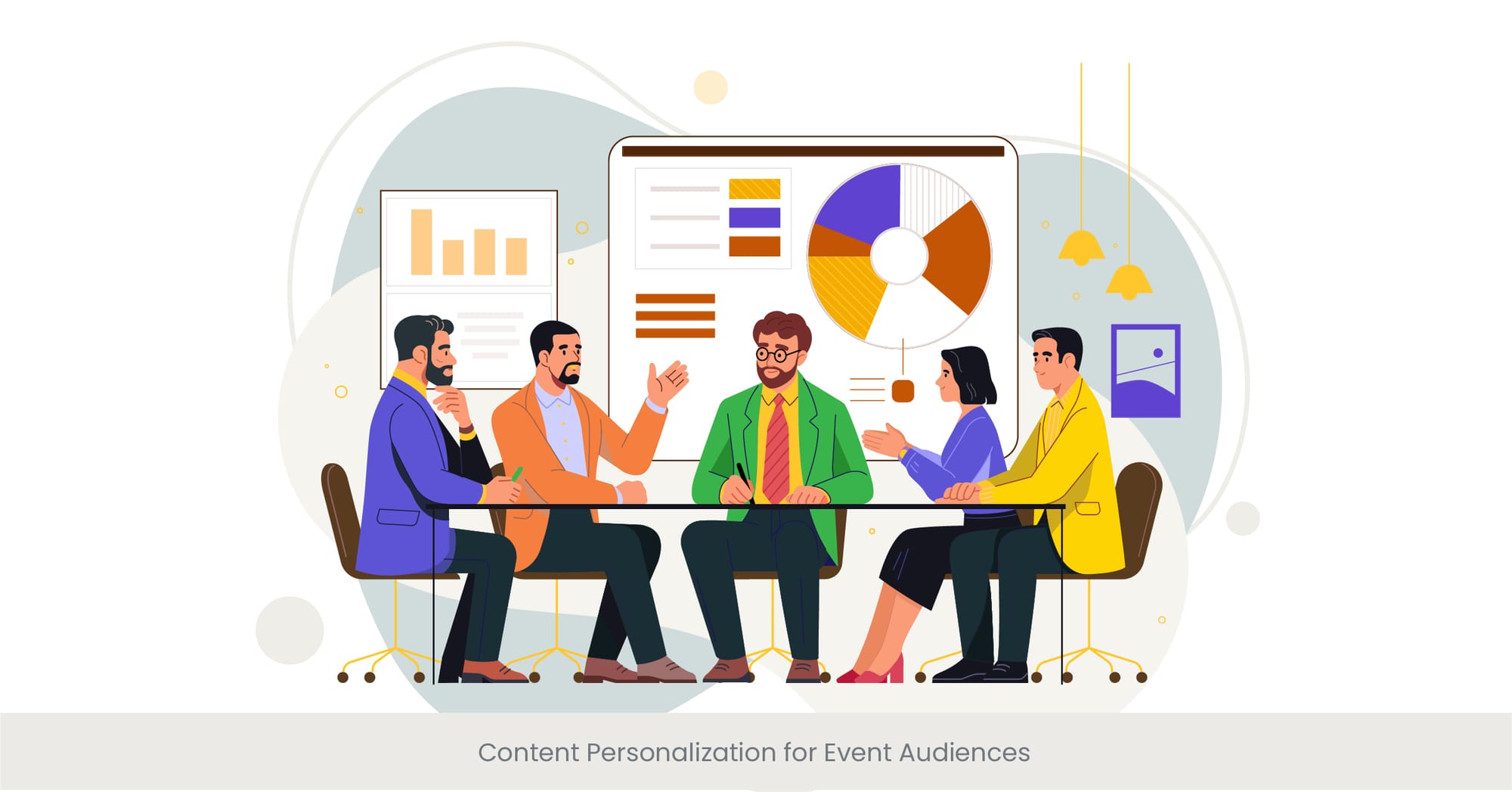
Tailoring Experiences to Meet Individual Preferences
Content personalization has become a cornerstone of effective event marketing, allowing organizers to tailor their messaging and content to meet the unique preferences and behaviors of their audience. This bespoke approach not only enhances the relevance of the content for each recipient but also significantly boosts engagement by making each interaction feel personally crafted. In the realm of events, personalization can range from customized email communications to targeted social media ads, each designed to resonate with specific segments of the potential attendee base.
Corporate event presentations require a strategic approach to convey key messages effectively. Tailored designs and data visualization ensure that audiences are engaged, while the right storytelling techniques enhance the overall impact of your event. Custom presentations can elevate your brand presence and communication at such high-stakes events.
Need help with your corporate presentation? Contact us today!
The Science and Strategy Behind Personalization
The journey towards effective content personalization involves a blend of data analysis, audience segmentation, and creative content adaptation. By leveraging data on attendee preferences, past behaviors, and engagement patterns, event marketers can segment their audience into distinct groups, each with tailored content strategies. This scientific approach ensures that every piece of content, whether a promotional video or an event announcement, speaks directly to the interests and needs of its intended audience, thereby maximizing its impact.
Conference presentation designs need to captivate large, diverse audiences with clarity and precision. Utilizing engaging visuals, clear messaging, and interactive elements, these presentations must strike the right balance between professional aesthetics and audience engagement. A well-designed conference presentation can make or break your speaking session.
Discover how we’ve transformed presentations for top global brands.
See Case Studies
Illustrating Impact through Case Studies
Examples of successful content personalization in event marketing abound, showcasing the diverse ways in which events can engage their audiences. For instance, events utilizing AI-driven recommendations to suggest sessions or activities based on attendees' interests specific needs have reported higher satisfaction rates and engagement levels. Similarly, personalized event apps that curate content based on user behavior offer a more engaging and relevant experience, leading to increased interaction and participation.
Empirical Evidence Supporting Personalization
The effectiveness of content personalization in enhancing event engagement is well-documented. Studies show that personalized event communications can lead to significantly higher open and click-through rates compared to generic messages. Furthermore, content and visual design services specializing in personalized content strategies report seeing a marked improvement in conversion rates and attendee loyalty. These insights highlight the critical role of personalization in crafting engaging, impactful event marketing campaigns.
Measuring the Success of Content Marketing Efforts
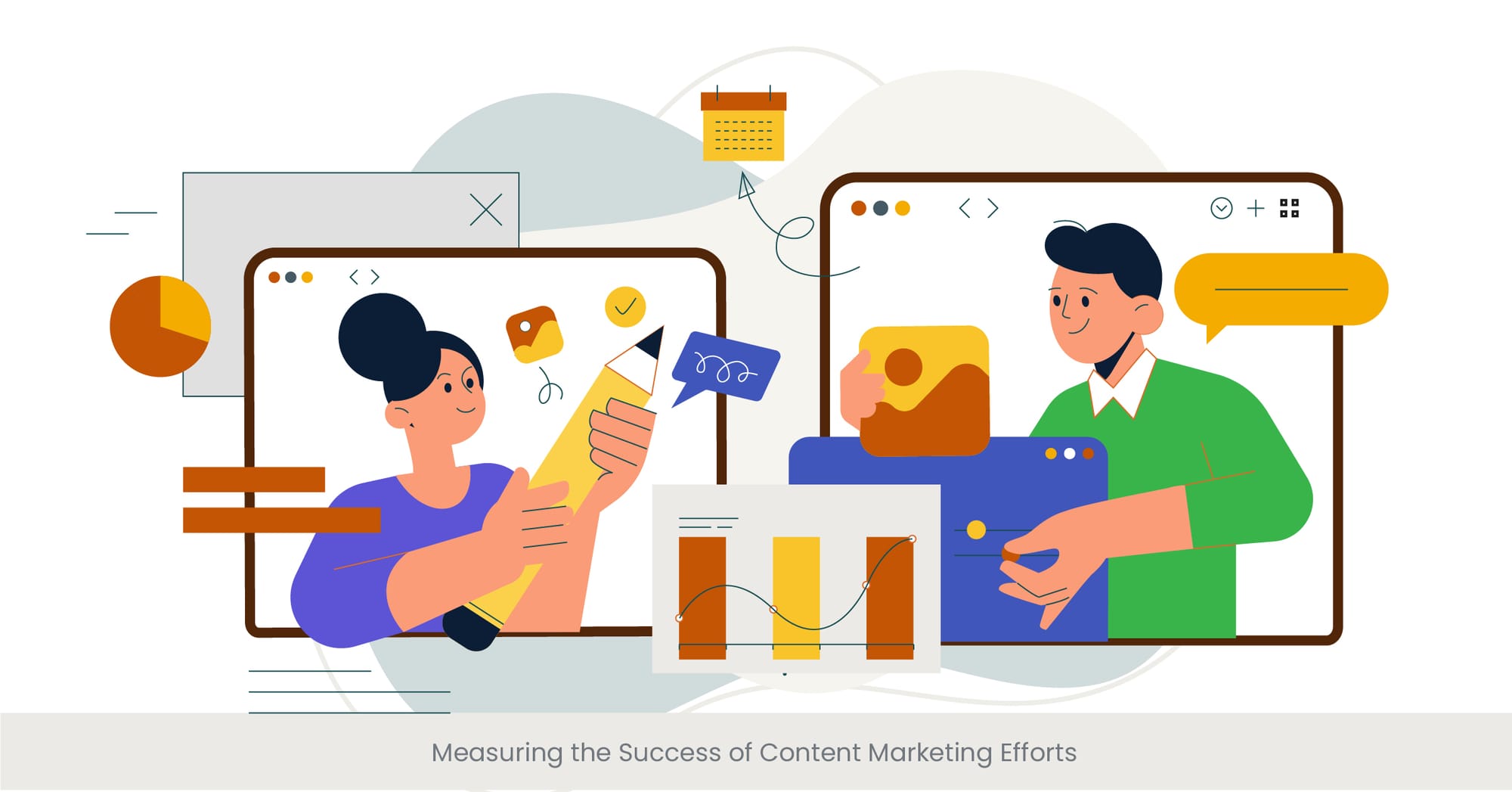
Establishing Metrics for Effective Evaluation
The evaluation of content marketing efforts is crucial for understanding their impact on event promotion and overall success. By establishing clear metrics and key performance indicators (KPIs), event organizers can measure the effectiveness of their content strategies, identify areas for improvement, and make data-driven decisions for future initiatives. Common metrics include engagement rates, conversion rates, social media shares, the event website, traffic, and attendee feedback, each offering insights into how well the content resonated with the target audience.
In the digital era, virtual event presentation design has become essential for maintaining audience engagement in online settings. Utilizing dynamic visuals, interactive features, and clear communication can make your virtual presentations stand out, ensuring your message resonates effectively, even in a virtual environment.
The Role of Analytics in Content Marketing
Analytics play a pivotal role in measuring the success of content marketing efforts, providing a wealth of data on audience behavior, content engagement, and campaign performance. Utilizing tools like Google Analytics, social media analytics, and email marketing platforms, marketers can gain a comprehensive understanding of their content's reach, engagement, and conversion impact. This analytical approach allows for the optimization of content strategies in real-time, ensuring maximum effectiveness and ROI.
Case Studies: Success Measurement in Action
Real-world examples of successful content marketing evaluation often involve a multi-faceted approach to analytics. For instance, events that have achieved significant success through content marketing typically conduct thorough post-event analyses, combining quantitative data with qualitative attendee feedback to gauge overall performance. These case studies highlight the importance of a holistic view of success measurement, incorporating both hard metrics and attendee perceptions to assess the impact of content marketing strategies.
Validating Strategies with Industry Insights
The importance of measuring content marketing success is echoed by industry experts and content and visual design agencies, who emphasize the value of data in refining marketing strategies. According to research, events that employ rigorous success measurement practices tend to see continuous improvement in their marketing effectiveness, leading to higher attendee satisfaction and increased return on investment. These insights underscore the necessity of establishing robust metrics and analytics practices to evaluate and enhance content marketing efforts for events.
Need a professional roadshow presentation design? Talk to our experts!
FAQs on Leveraging Content and Marketing to Elevate Your Event
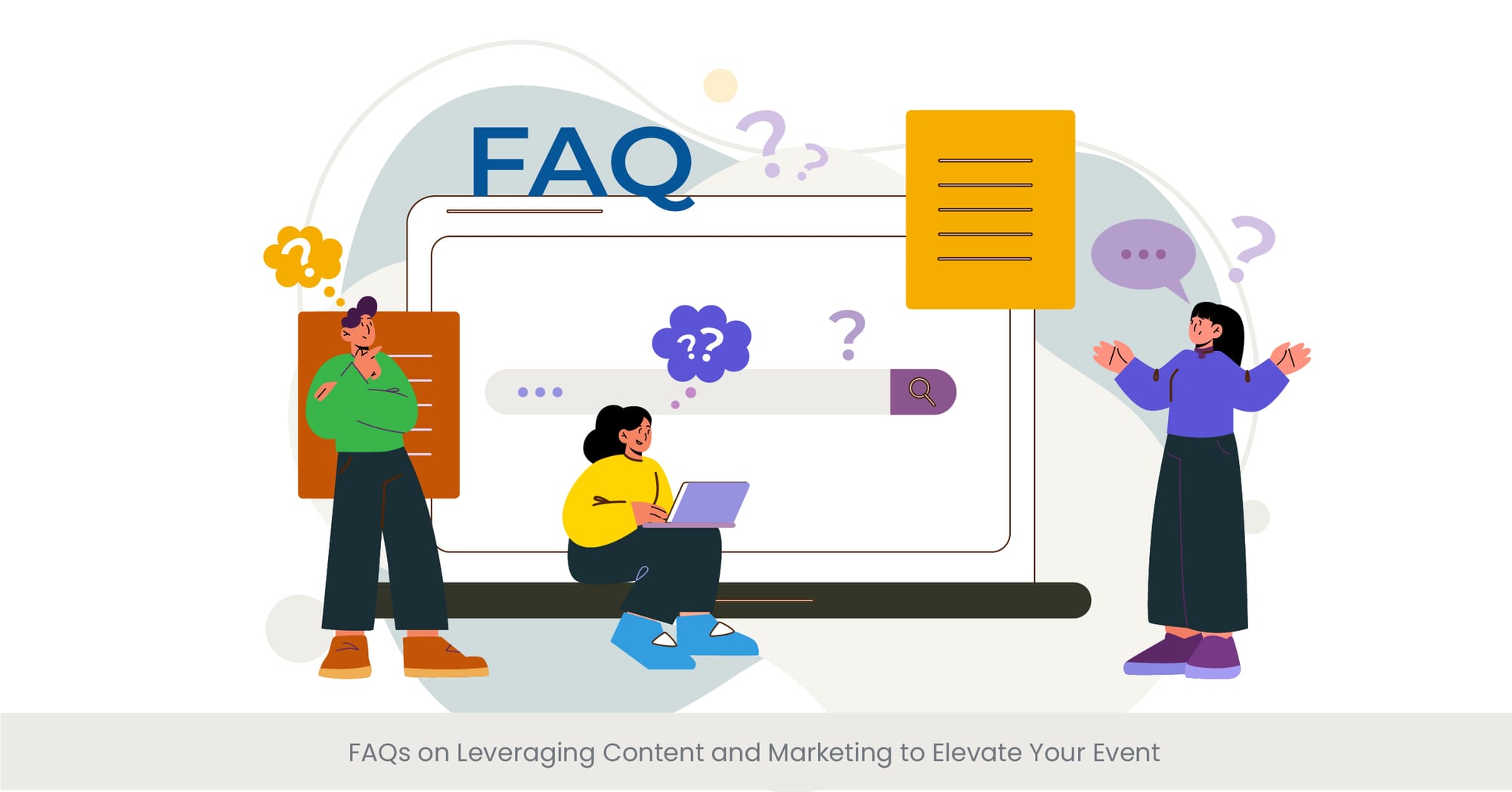
What does a creative content agency do?
A creative content agency service that specializes in producing engaging, high-quality content tailored to a brand's specific goals and target audience. These agencies offer a range of services including strategy development, content creation, graphic design, video production, and more, helping brands elevate and manage their presence and connect with their audience more effectively.
What is the difference between a social media agency and a creative agency?
A social media agency focuses primarily on creating and managing content for social media platforms, including strategy, posting, engagement, and analytics. A creative agency, however, offers businesses a broader range of services that may include branding ideas, marketing strategy, content creation across various mediums, and even experiential marketing, alongside social media management.
What does a graphic design agency do?
A graphic design agency provides professional design services to create visual content that communicates a brand's message effectively. This can include logo design, branding materials, promotional content, digital graphics, and more. These agencies focus on aesthetic appeal and message clarity to enhance brand recognition and engagement.
Who is responsible for doing all the visual designs in an agency?
Visual designs within an agency are a project typically handled by a team of graphic designers, each with their own areas of expertise. This team works under the direction of a creative director or design manager, ensuring that all visual content aligns with the client's branding and campaign goals.
What is a visual content designer?
A visual content designer is a professional who specializes in creating graphic content for various media platforms. This role involves designing visuals that are both appealing and cost effective in communicating the intended message, such as infographics, social media graphics, website design elements, and more.
What is the difference between a graphic designer and a content designer?
A graphic designer focuses primarily on creating visual content, including images, layouts, and typography, to communicate ideas aesthetically. A content designer, however, focuses on the creation, presentation design and structuring of content (textual, visual, multimedia) to ensure it meets user needs and supports user journeys, often within digital platforms.
What are the 7 types of graphic design?
The seven types of graphic design include:
Visual identity and branding design.
Marketing and advertising design.
Web and user interface design.
Publication and editorial design.
Packaging design.
Motion graphics design.
Environmental design.
What are the graphic design services?
Graphic design services encompass a wide range of service offerings aimed at creating visually compelling business content. These services include branding and logo design, marketing and promotional materials, digital design for websites and apps, publication design, packaging design, and more.
What is motion graphic production?
Motion graphic production involves creating animated visual content that combines text, graphics, and sound to convey messages in an engaging and dynamic way. This type of production is often used in advertisements, promotional videos, educational content, and website animations.
What are graphics in video production?
Graphics in video production refer to the visual elements used to enhance video content, including titles, lower thirds, animated logos, illustrations, and visual effects. These graphics help to convey information, reinforce branding, and add aesthetic appeal to the video.
What is event entertainment and production?
Event entertainment and production involve planning, organizing, and executing live events, performances, activities, and multimedia presentations designed to entertain and engage attendees. This can include musical acts, speakers, interactive installations, and audio-visual elements, all curated and created to enhance the overall event experience.
What is a multimedia event?
A multimedia event is an occasion that incorporates multiple forms of media, such as video, audio, lighting, and interactive technology, to create and deliver an engaging and immersive experience for attendees. These events often blend live performances with digital elements to captivate and entertain the audience.
What is the difference between immersive and experiential marketing?
Immersive marketing focuses on creating a fully engaging environment that envelops the consumer in the brand experience, often using virtual or augmented reality. Experiential marketing, while also engaging, centers on creating memorable interactions and experiences with the brand in the physical world, encouraging participation and engagement through direct involvement.
What is experiential marketing experience?
An experiential marketing experience is a marketing strategy that directly engages consumers by inviting them to participate in a brand's activity or event. This approach aims to create a memorable impact by providing tangible, interactive experiences that foster a deeper emotional connection with the company or brand.
What is meant by immersive experience?
An immersive experience is designed or created to completely engage the senses, often employing technology such as VR or AR, to create a fully enveloping, interactive experience that transports participants into a different reality or enhances their interaction with the physical world, making the engagement deeply engaging and memorable.
What is the difference between events and experiential marketing?
Events are specific occasions or gatherings focused on a particular purpose, such as conferences, concerts, or trade shows. Experiential marketing, on the other hand, refers to marketing strategies that create immersive, interactive experiences designed to provide feedback and to engage consumers directly with a brand, which can occur within or outside traditional event settings.

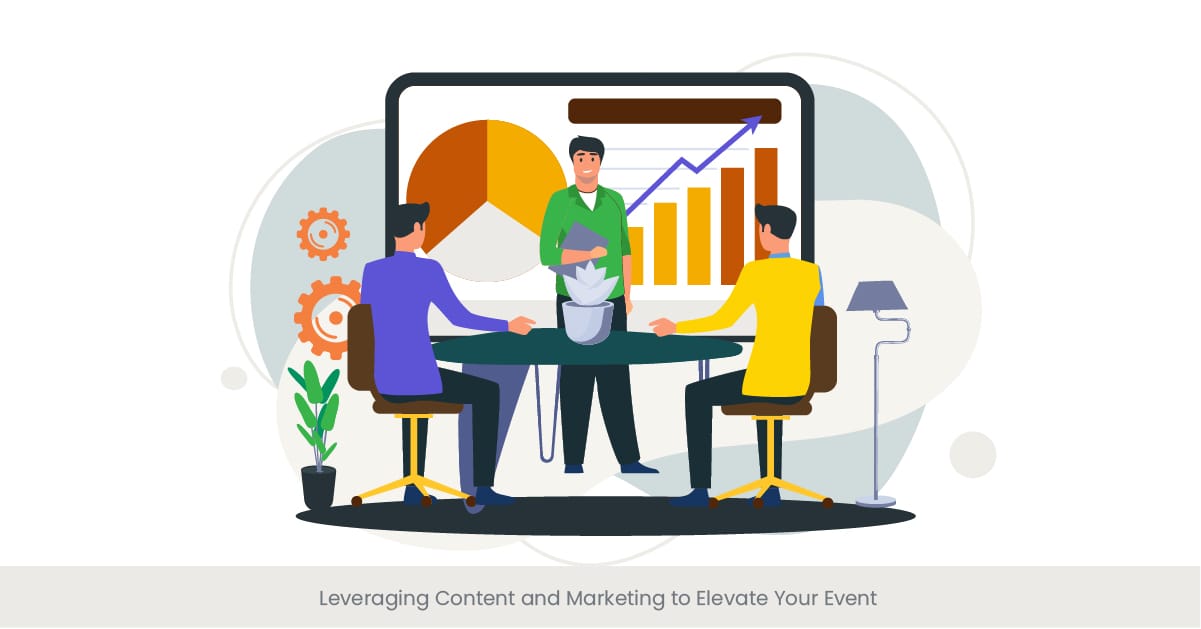

%20(1).jpg)
%20(1).jpg)
